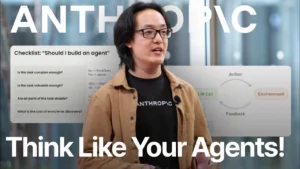Table of Contents
Imagine being able to leverage the power of advanced machine learning and large language models without breaking your budget… It’s now possible!
The world of AI has been shaken up by Stanford researchers who’ve proven that you don’t need deep pockets to create an effective language model. In fact, with just $600 and some clever strategies, they managed to build their own, outperforming even well-established models in certain tests. The bulk training data cost less than $500. And fine-tuning on the cloud took about three hours only and cost them less than $100. This is how businesses can have their private AI Model (LLM) for less the USD 1000, and that could revolutionize their operations too.
Building your own Language Model
The Stanford researchers have built an effective language model, all under the price tag of just $600. The more interesting thing about that is that OpenAI’s helpfully provided APIs, which they have used and generated 52,000 sample conversations to train this powerful llama model.
Pre-training vs. Fine-tuning vs. in-context-learning (ICL)
For those who are not familiar with these terms, pre-training refers to when the model is trained on a large general corpus. Pre-training involves training a language model on a substantial amount of data, typically billions of words, with the main objective of predicting the next word in a given sentence. On the other hand, fine-tuning occurs when the model is adapted to a specific task or dataset. For instance, typically, you can simply take the pre-trained model and then fine-tune it for a specific task like classification or question-answering. However, if you discover that the target dataset belongs to a particular domain and you have some unlabeled data that could assist the model in adapting to that domain, then you can perform unsupervised learning (sometimes referred to as “pre-training” when using a large corpus). Afterward, you can proceed with fine-tuning the target corpus for the desired task.
While task-specific fine-tuning is a relatively affordable process for models like BERT, which has a few hundred million parameters, it becomes quite costly for large GPT-like models that contain several billion parameters. Instead of fine-tuning the model with hundreds or thousands of input texts, we can utilize in-context or few-shot learning by designing prompts. In this approach, the model only requires a small number of task-specific examples to learn and perform the desired task.
Fine-tuning vs. embedding
We mentioned that Fine-tuning involves training the model with specific domain data to enable a chatbot, for instance, to generate responses related to that particular domain. On the other hand, text embedding is a method of representing text as numerical values, allowing us to search, select, classify or group similar texts. For example, using embeddings, you can inquire about your PDF files without needing to fine-tune the model. The advantages and disadvantages of both Fine-tuning and Text Embedding can vary depending on the specific use case, dataset, and requirements. It is crucial to have a thorough understanding of these factors in order to effectively and responsibly utilize these techniques.
The Alpaca Model – A Resulting Success
Now let me introduce you to the Alpaca Model. This resulting model won over ChatGPT’s underlying GPT models in a whopping 90 out of 179 tests. This goes on to show that machines have insane potential when equipped with advanced machine-learning knowledge.
All these achievements were made possible at such a small fraction of the chief costs typically associated with commercial AI companies working within this sector. So there you have it – building your own private AI doesn’t need millions or even thousands anymore.
The Stanford Approach has been a game-changer for commercial AI companies operating in the field. This approach has completely transformed the industry, making it much simpler and more cost-effective to duplicate and retrain potent LLaMA models. Gone are the days when millions of users or extensive machine learning expertise were necessary – even a small model size can produce remarkable outcomes.
EleutherAI models (GPT-J and GPT-NEO)
The GPT-Neo model series from EleutherAI has unveiled models with 125 million, 1.3 billion, 2.7 billion, 6 billion, and a whopping 20 billion parameters. These models were made available in March 2021 and stood as the largest open-source language models in the world at that time, following the style of GPT-3.
GPT-J is a model that was released by EleutherAI shortly after they launched GPTNeo. The goal behind developing GPT-J was to create an open-source model that could match the capabilities of OpenAI’s GPT-3 model. With its larger size compared to GPTNeo, GPT-J has demonstrated superior performance on various benchmarks.Click to Tweet
Hosting Your Own On-Premise Model
The landscape of AI is ever-evolving. With the rise in commercial AI companies working and experimenting with language models, there’s a new trend emerging: hosting your own on-premise model. This approach eliminates cloud computing costs, making it more affordable to build private AI solutions like the LLaMA 7B model or GPT models developed by OpenAI.
Accessing Resources for Research & Development
Fortunately, there are resources that make this journey a tad easier, which could be instrumental in developing your own language models.
There’s always the risk of misuse by individuals or groups who may not adhere to responsible AI practices. It’s essential we remain vigilant and proactive.
As we delve deeper into building private AI solutions while adhering to guidelines set forth by industry pioneers like OpenAI CEO Sam Altman, it becomes clear how crucial these considerations truly are.
The Future Landscape of Private AI Models
Pioneers in this field, such as OpenAI CEO Sam Altman envision a world where every business can have its own custom-made language model.
No longer is advanced machine learning knowledge restricted to commercial AI companies working with million-dollar budgets. With developments like Stanford’s Alpaca project, powerful LLaMA models are becoming increasingly affordable and accessible. But with great power comes a need for accountability. The democratization of these technologies also opens up potential misuse by individuals or groups not adhering to responsible practices.
So yes. The future looks promising, but navigating through it requires careful consideration.
Remember – the chief competitive advantage lies not just in harnessing machines’ insane potential but in doing so responsibly.
So, how can you build your AI model?

- Simply select the environment you want to use for fine-tuning
- Select the model e.g. GPT-J
- Find a cleaned and suitable data set
- Run your NLP Machine learning code to fine-tune your model
Here is a great guide on how to do that in detail “Fine-tuning GPT-J 6B on Google Colab or Equivalent Desktop or Server GPU“
Stanford researchers have shown that it is possible to build an effective language model for just $600. This is a major breakthrough, as it means that businesses of all sizes can now benefit from the power of AI without breaking the bank. Alpaca was able to outperform ChatGPT’s underlying GPT models in a whopping 90 out of 179 tests. This shows the potential of this approach for building private AI models.
Overall, it’s now possible to build powerful language models for a fraction of the cost that was previously required. This could have a major impact on businesses of all sizes, and it could also lead to new and innovative applications for AI.
There are a number of potential benefits to using affordable AI language models. For example, these models could be used to improve customer service, automate tasks, and develop new products. Additionally, these models could be used to generate creative content, such as articles, blog posts, and marketing materials.
However, there are also some potential risks associated with the use of affordable AI language models. For example, these models could be used to generate biased or misleading content. Additionally, these models could be used to automate tasks that are currently performed by humans, which could lead to job losses.
It is important to be vigilant against misuse and to adhere to responsible AI practices when using affordable AI language models. With great power comes great responsibility. Businesses that use these models should ensure that they are used in a safe and ethical manner.





